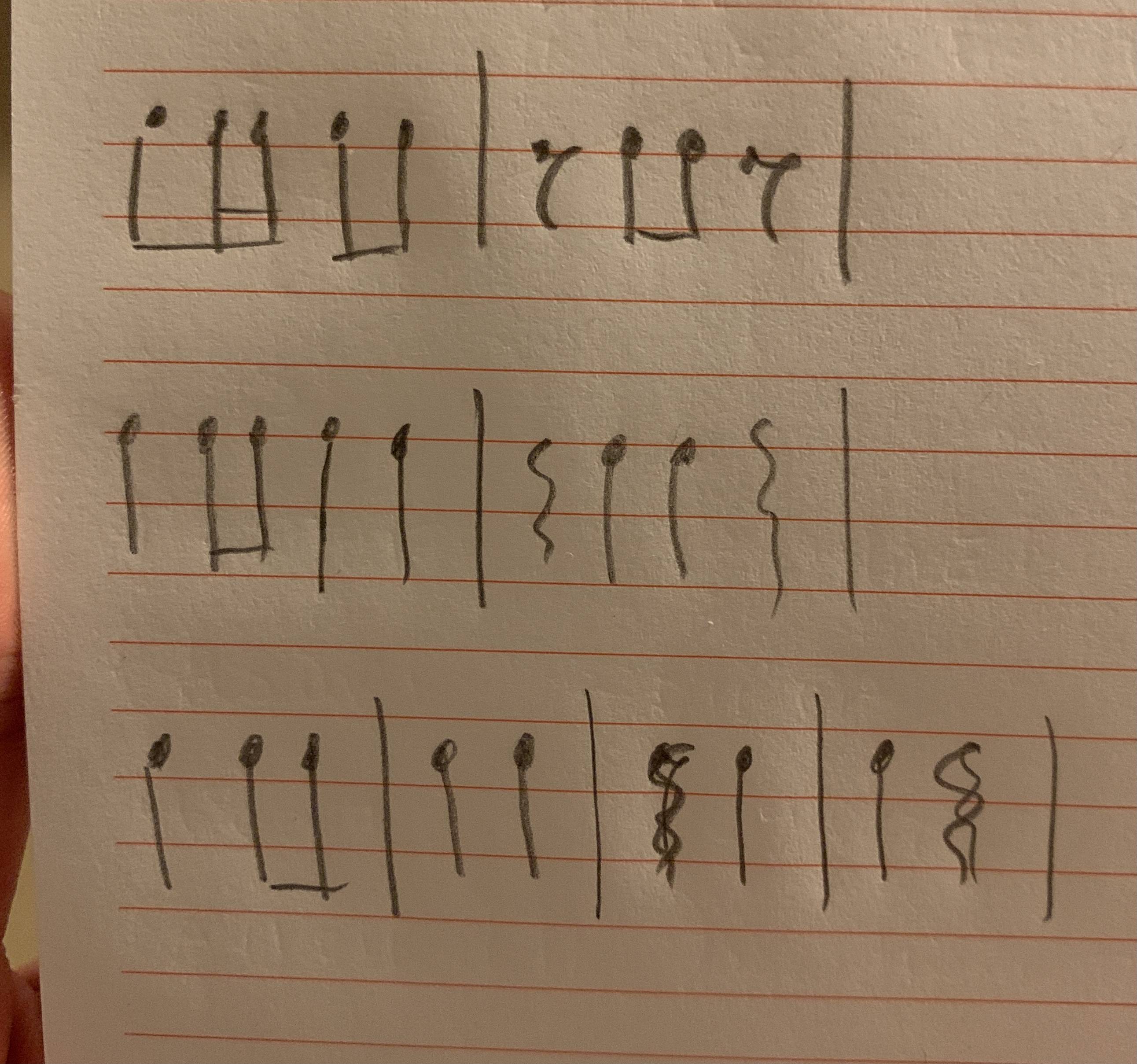The "Shave and a haircut — two bits" rhythm...
X: 1
T: Shave and a Haircut – Two Bits
T: Rhythm
K: clef=perc stafflines=1 middle=B
M: 4/4
L: 1/4
B B/2B/2 B B | z B B z |]
w: shave and a hair- cut, two bits!
...goes back at least to Charles Hale in 1899 according to Where does this famous rhythm pattern come from (oftenly used to knock on a door)?, which references Wikipedia: Shave and a Haircut.
The history is well described in the linked MusicFans.SE post; so, this being MusicPerformanceAndTheory.SE...
All three of the notations in the OP are correct; there is no canonical notation, just a set of rhythmic relationships, all of which are expressed. The eighth notes (or sixteenth notes: i.e., "and a") can be played straight or swung.
The traditional/characteristic "melody" is...
X: 1
T: Shave and a Haircut – Two Bits
T: Melody (standard)
K: none
M: 4/4
L: 1/4
c G/2G/2 A G | z B .c z |]
w: shave and a hair- cut, two bits!
...or sometimes...
X: 1
T: Shave and a Haircut – Two Bits
T: Melody (variant)
K: none
M: 4/4
L: 1/4
c G/2G/2 _A G | z B .c z |]
w: shave and a hair- cut, two bits!
...and also...
X: 1
T: Shave and a Haircut – Two Bits
T: Melody (variant 2)
K: none
M: 4/4
L: 1/4
c (3G/2^F/2G/2 _A G | z B .c z |]
w: shave and -a hair- cut, two bits!
The final rest is sometimes replaced with a "stinger" — an instrumental accent to end a piece.
X: 1
T: Shave and a Haircut – Two Bits
T: With "stinger"
K: none
M: 4/4
L: 1/4
c G/2G/2 A G | z B .c .!>!C |]
w: shave and a hair- cut, two bits!
 It should be one of the three here, where those mysterious signs are just pauses (sorry for the bad handwrite).
It should be one of the three here, where those mysterious signs are just pauses (sorry for the bad handwrite).
